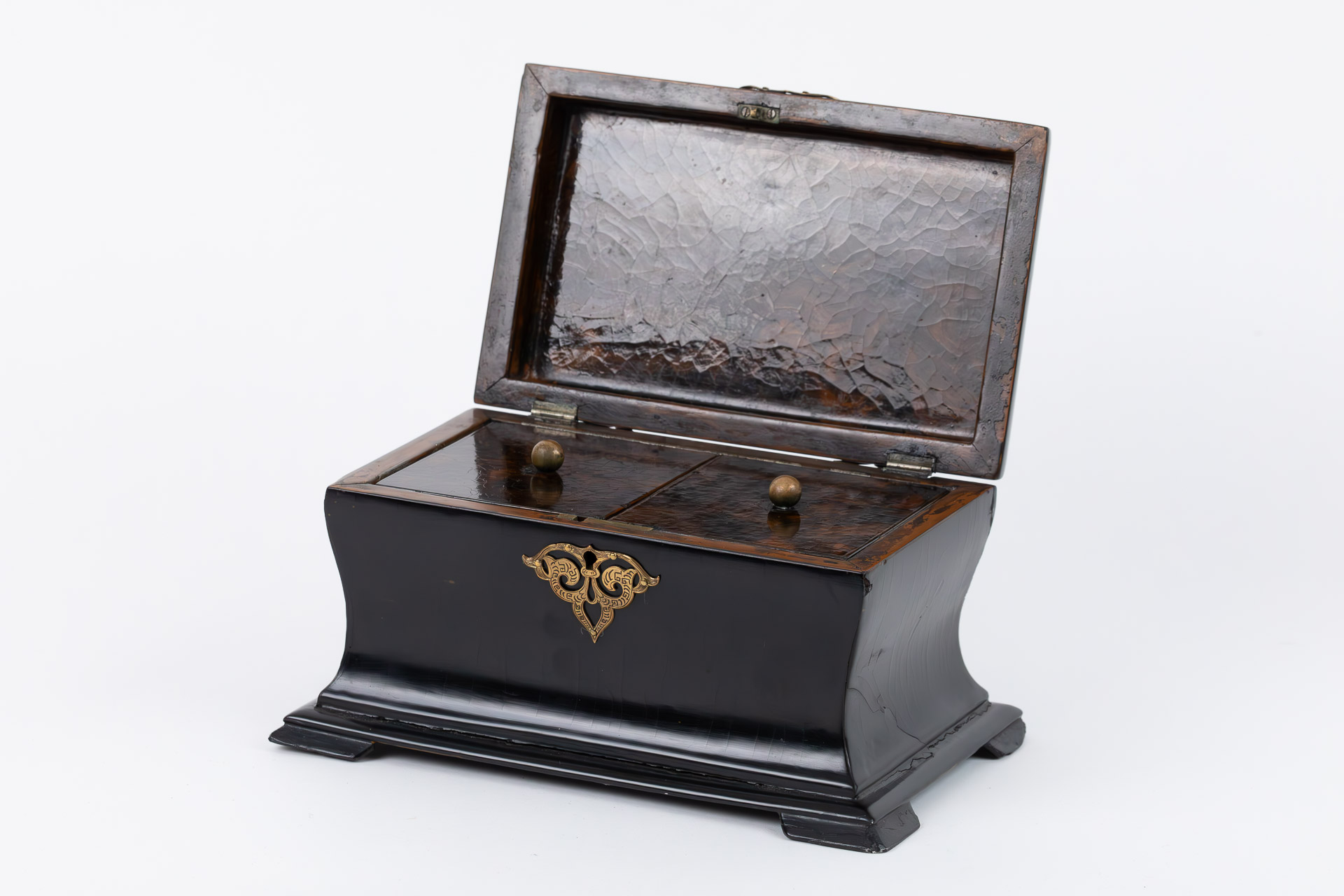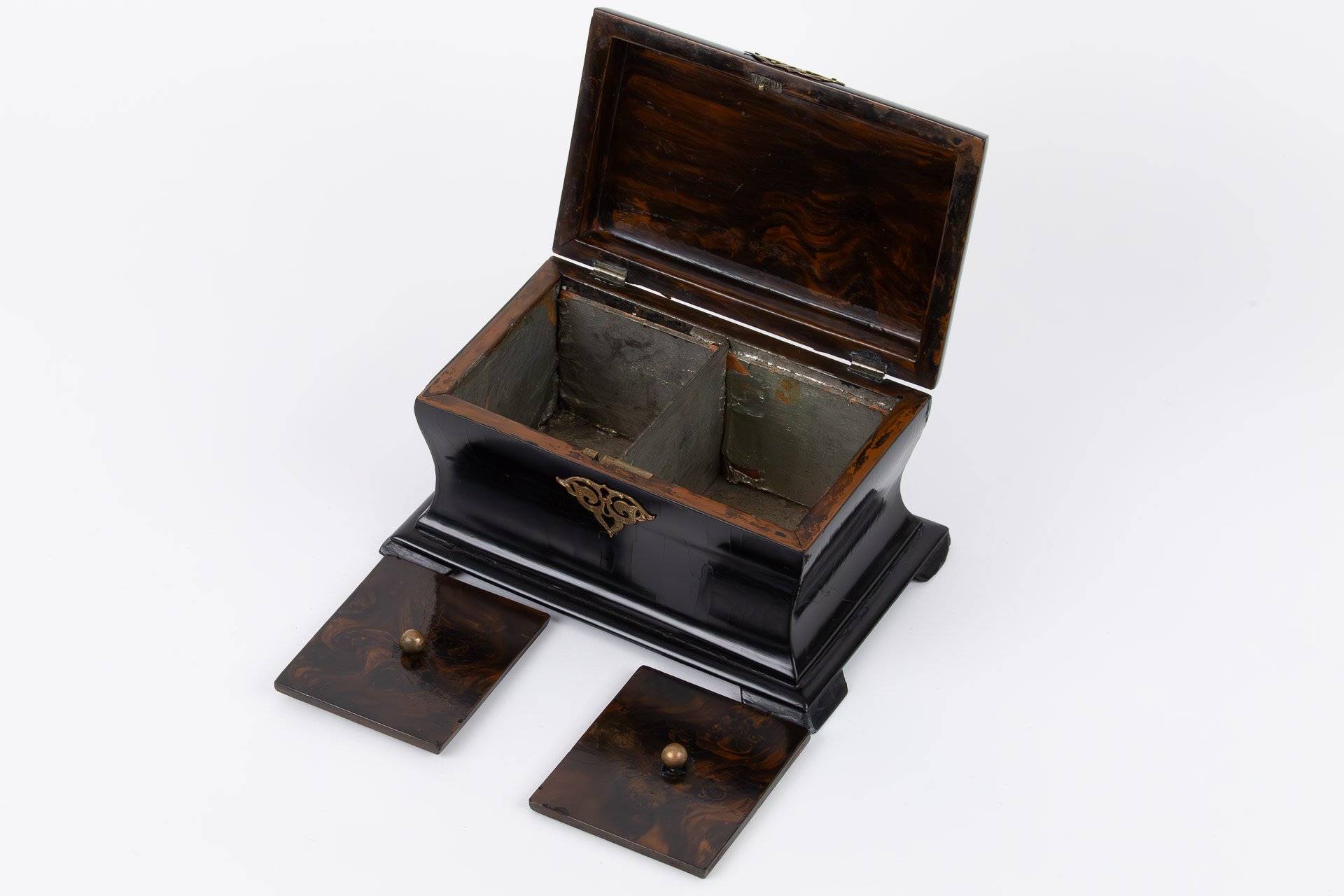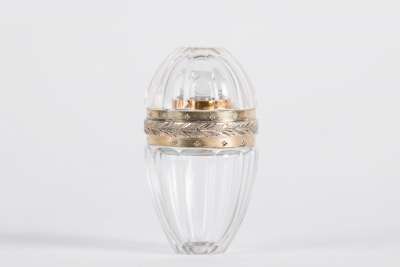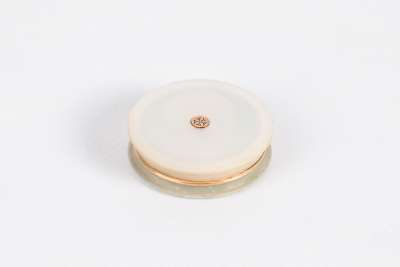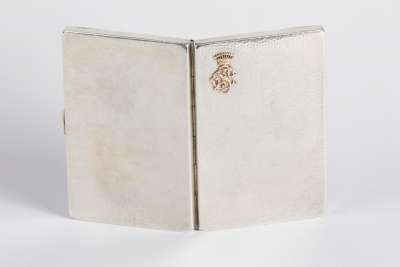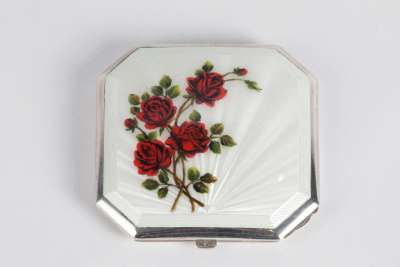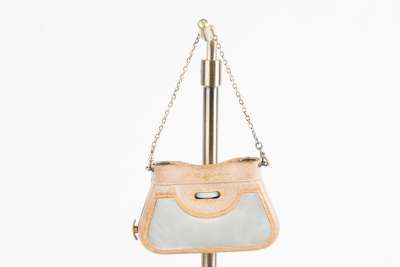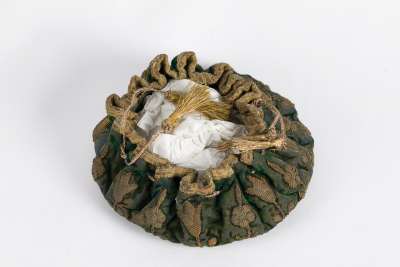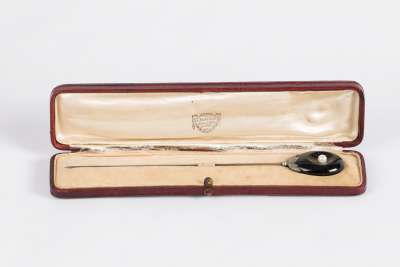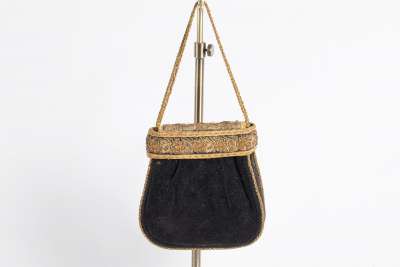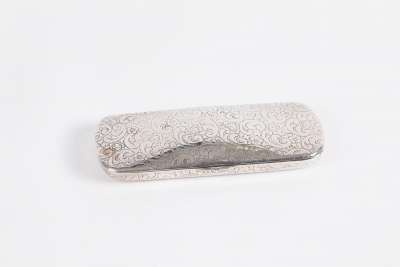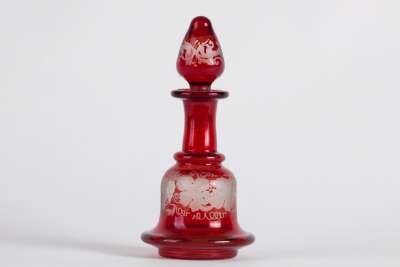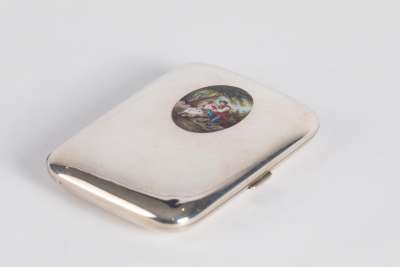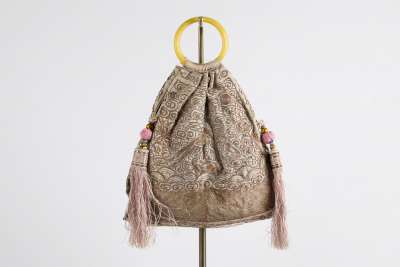An antique English tea caddy stands out with its lustrous black japanned finish, a technique that was popular in the 19th century and involved the application of layers of lacquer to create a smooth and polished surface. The high gloss of the lacquer contrasts beautifully with the ornate brass mounts that adorn the exterior. The ornate brass mounts, featuring intricate designs and patterns, add a touch of elegance to the piece.
Upon opening the caddy, the two compartments have been hand-painted to simulate a walnut finish. Each compartment, designed to hold tea leaves, is separated by a central divider, ensuring the different teas remain distinct and uncontaminated.
The interior's painted finish, designed to mimic the appearance of walnut, adds an element of surprise and contrasts beautifully with the exterior's deep black hue.
The box's shape, with its curved and sloping sides, is evocative of the design preferences of the mid-19th century. It rests on four sturdy feet, ensuring stability and adding to its stately appearance.
Circa; 1860
Condition Report: Good with minimal wear consistent with age and use.
Dimensions: Weight 925gms, Length 25cm, Width 4.5 cm, Height 1.6m.

